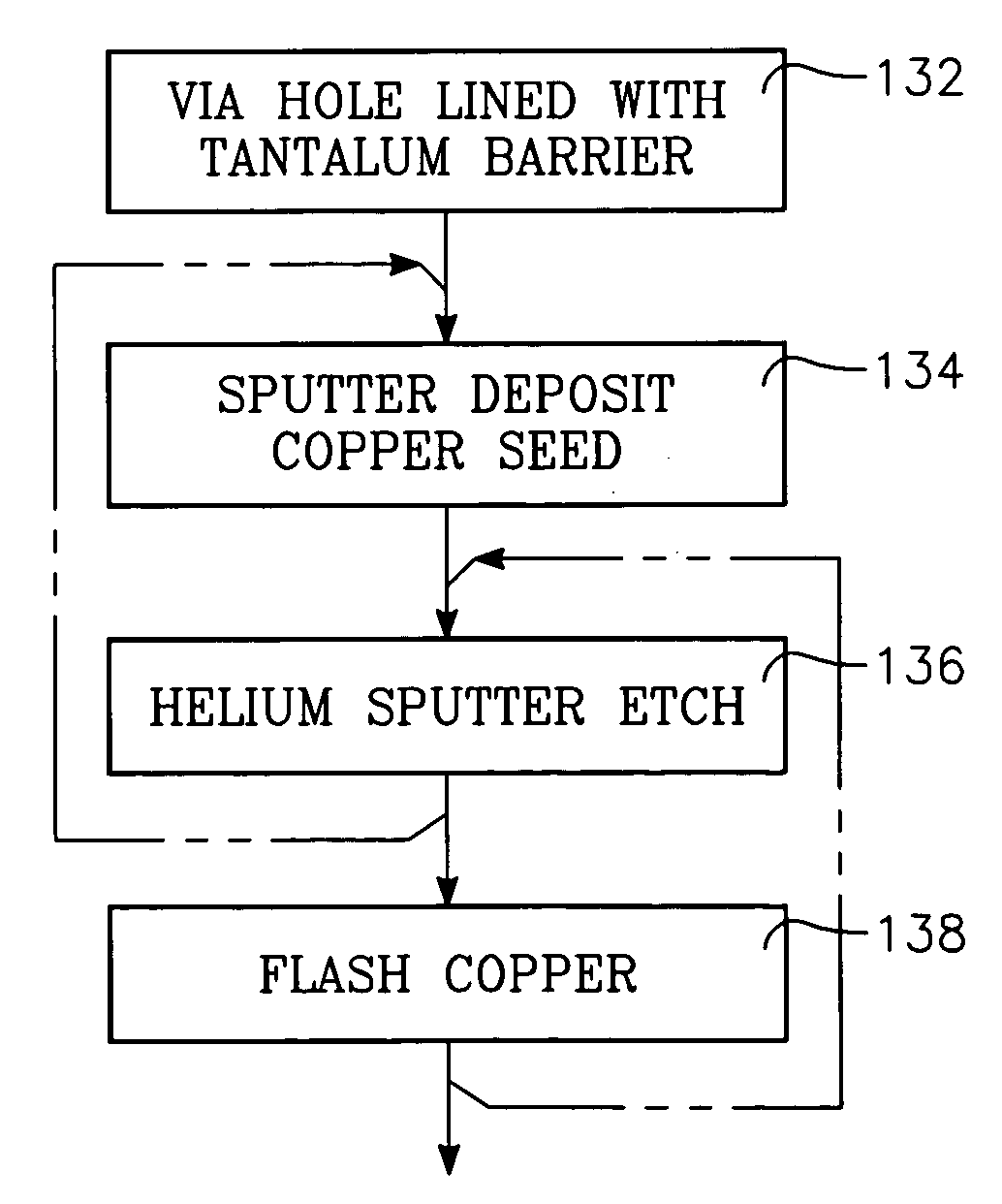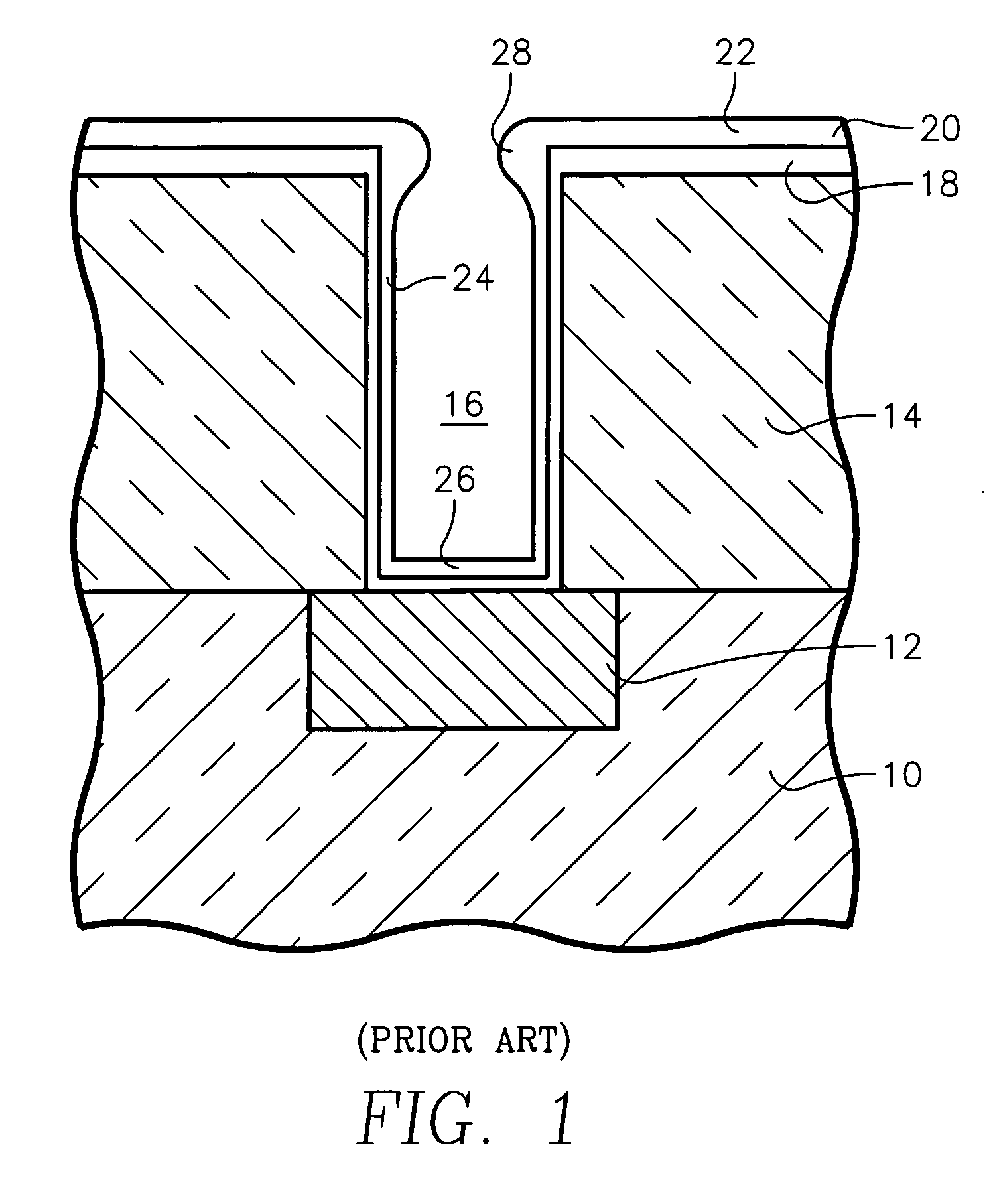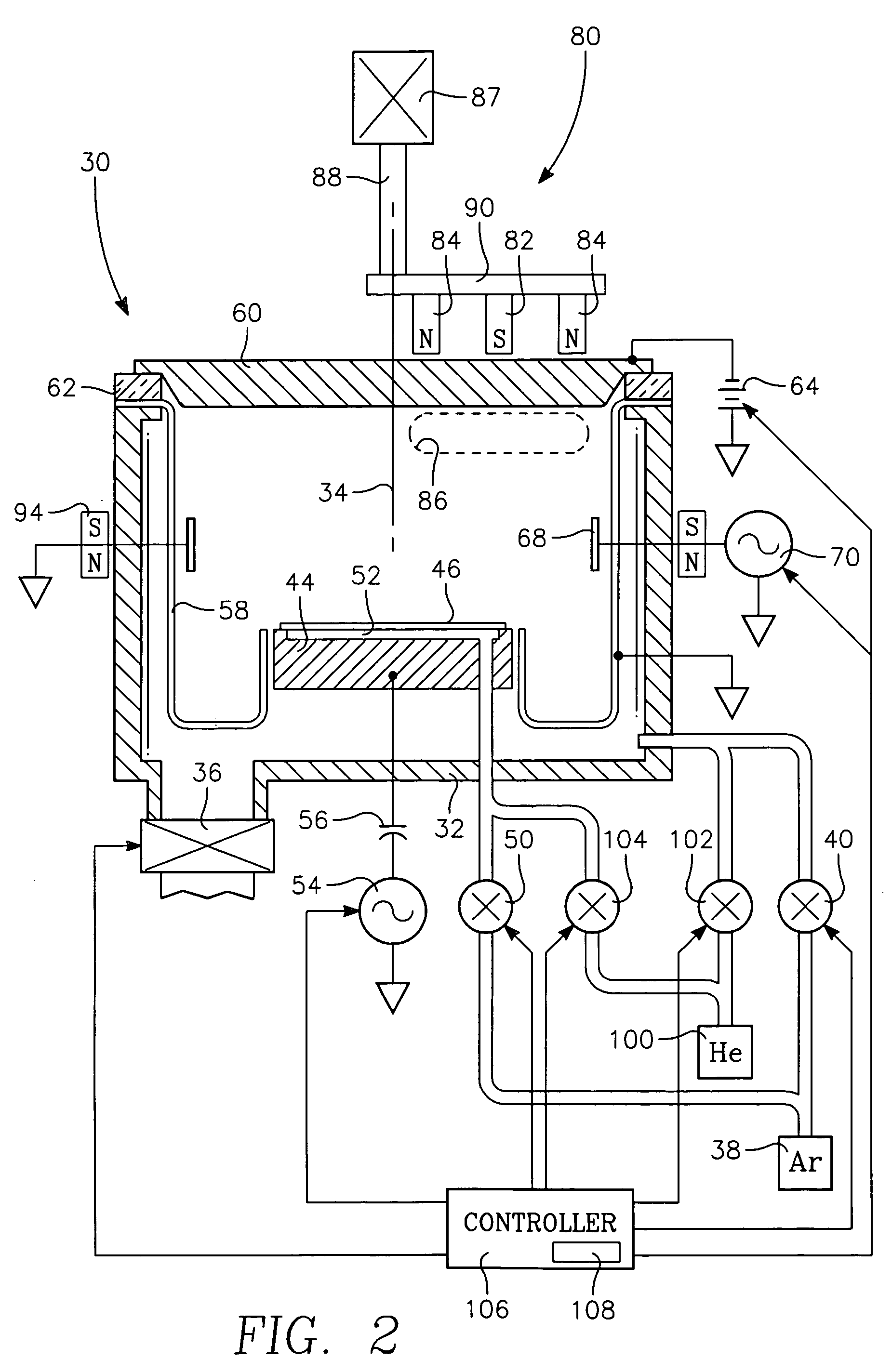Sputter deposition and etching of metallization seed layer for overhang and sidewall improvement
a seed layer and metallization technology, applied in the field of sputter etching process, can solve the problems of increasing the difficulty of sputtering technology, reducing the feature size of advanced integrated circuits, and the same problems, and achieve the effect of high selectivity
- Summary
- Abstract
- Description
- Claims
- Application Information
AI Technical Summary
Benefits of technology
Problems solved by technology
Method used
Image
Examples
Embodiment Construction
[0024] One embodiment of the invention may be practiced in a sputter reactor capable of both sputtering depositing target material on a substrate and sputter etching the same substrate The sputter etching of the overhangs or other features is advantageously performed with a gas lighter than the usual argon sputter working gas. One example of such a magnetron sputter reactor 30 is illustrated in schematic cross sectional view in FIG. 2 is available from Applied Materials, Inc. of Santa Clara, Calif. although it was previously used with a tantalum target for barrier deposition rather than for copper or aluminum sputtering. The reactor 30 includes a vacuum chamber 32 arranged generally symmetrically about a central axis 34. A vacuum pump system 36 pumps the chamber 32 to a very low base pressure in the range of 10−6 Torr. However, an argon gas source 38 connected to the chamber 32 through a mass flow controller 40 supplies argon as a sputter working gas into the chamber 32. The argon p...
PUM
| Property | Measurement | Unit |
|---|---|---|
| thickness | aaaaa | aaaaa |
| width | aaaaa | aaaaa |
| width | aaaaa | aaaaa |
Abstract
Description
Claims
Application Information
 Login to View More
Login to View More - R&D
- Intellectual Property
- Life Sciences
- Materials
- Tech Scout
- Unparalleled Data Quality
- Higher Quality Content
- 60% Fewer Hallucinations
Browse by: Latest US Patents, China's latest patents, Technical Efficacy Thesaurus, Application Domain, Technology Topic, Popular Technical Reports.
© 2025 PatSnap. All rights reserved.Legal|Privacy policy|Modern Slavery Act Transparency Statement|Sitemap|About US| Contact US: help@patsnap.com



